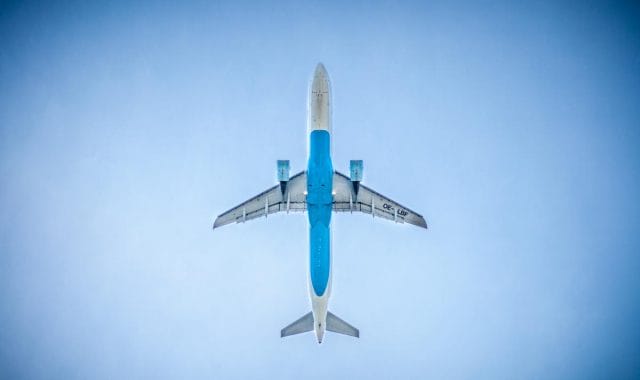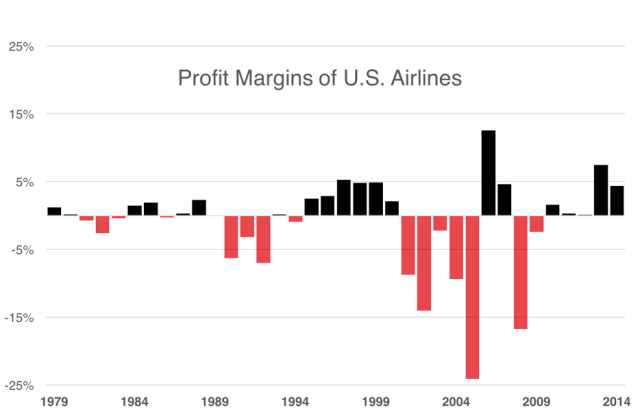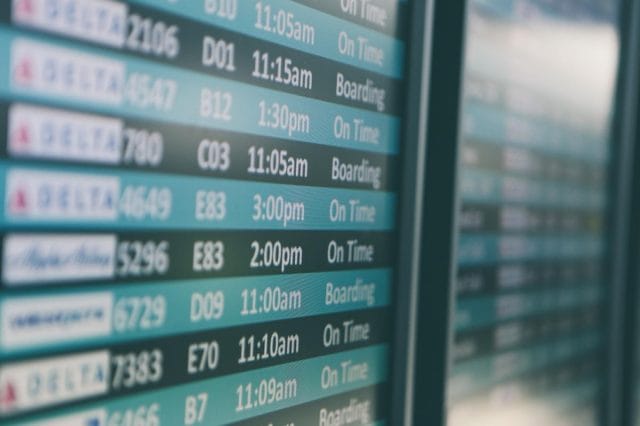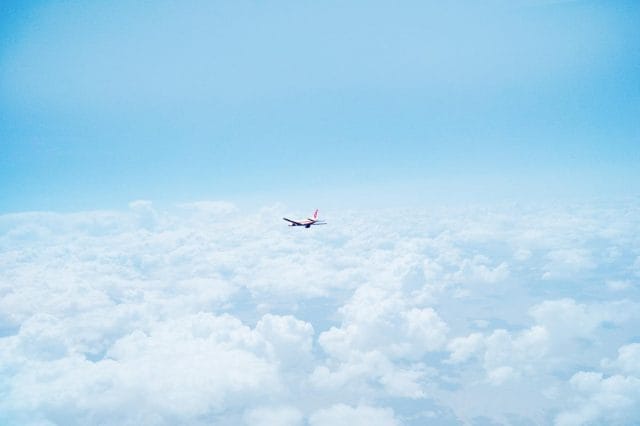
Few industries are as hated as America’s airlines.
In market research, airlines regularly rank among the most despised industries. A 2014 survey found that Americans hold airlines in only slightly more esteem than cable companies, and they regard insurance companies more favorably than airlines.
Along with companies like Comcast, AT&T, and Anthem Blue Cross Blue Shield, Americans view airlines as monopolies that they cannot avoid. Just like in the health insurance or wireless business, a few dominant players seem to mistreat customers with impunity. Delta, United, and American Airlines have eliminated meals, made their seats smaller and smaller, overbooked flights, abandoned small cities, and demanded fees for checked bags. Passengers have few alternatives.
Yet airlines are not raking in profits. Historically, the industry’s financial health has resembled the restaurant business more than an era of robber barons. Six major airlines went through bankruptcy in the 2000s, and from 1979 to 2014, airlines lost $35 billion.
Richard Branson has famously stated, “If you want to be a millionaire, start with a billion dollars and launch a new airline.” His airline, Virgin America, consistently lost money even as it won accolades for its staff, service, and overall customer experience.
In a letter to investors about airlines, Warren Buffett wrote, “Here a durable competitive advantage has proven elusive ever since the days of the Wright Brothers.” He has called his investment in U.S. Airways one of his biggest blunders.
Venture capitalist Peter Thiel advocates for creating and investing in potential monopolies, yet he describes airlines as an example of a business where competition destroys all the profits. “In the entire hundred year history of the airline industry,” he says, “the cumulative profits in the US have been approximately zero.”
For years, the dismal prospects of flying people around the world has been almost cliche. Until this past year, when airlines started making record profits.
It’s unclear how you should feel about that.
A Monopoly on the Skies
Until 1978, the airline business was stable, boring, and characterized by a level of regulation that even Bernie Sanders might find excessive.
The American government considered air travel a “public convenience and necessity,” and the federal Civil Aeronautics Board regulated private airlines like utility companies. The CAB set airline ticket prices, approved routes and schedules, and even considered questions like “May the employees of two financially affiliated airlines wear similar-looking uniforms?” Despite the restrictions, airlines performed fine financially as the CAB ensured that they earned a reasonable margin on flights.

In many ways, regulation created the golden age of air travel. Since airlines could not compete on price or routes, they spent on ad campaigns that featured Andy Warhol, offered unlimited booze, and served dinner with fine china.
Yet air travel was only golden for those who could afford it, which made Southwest’s no-frills airline so appealing. Southwest avoided CAB’s regulations because it only flew within Texas, and its cheap ticket prices resulted in a fare war between Southwest and a larger carrier. The competition also pushed Southwest to develop its famed “10-minute ‘turns’ between reaching the gate, disembarking passengers, boarding new passengers and leaving.”
The Southwest model combined with liberals’ contention that regulating airlines amounted to corporate welfare inspired Congress and President Carter to unleash the forces of capitalism in 1978. After the passage of the Airline Deregulation Act, airlines existed in a brave new world.
Today, deregulation is generally viewed as a success. Fares dropped, ridership increased, and airlines developed the hub and spoke system, which replaced most direct flights between smaller cities with connections to large hubs like New York, Chicago, and Dallas.
The real surprise of deregulation, however, is that few to no airlines were able to make a consistent profit. The airline industry has never enjoyed a stretch of profitability that lasted longer than 6 years. Overall, the industry has lost $35 billion since deregulation.

Data from Airlines For America; chart by Priceonomics
This is doubly weird because airlines succeeded at avoiding competition to a greater extent than expected.
One factor that makes the airline industry monopolistic is the challenge of starting an airline. A new Boeing 777 costs $320 million. Even a low cost, regional carrier needs around $100 million to get started, and the certification process is lengthy. As one airline executive told the New York Times, “The only harder thing to start up than an airline is a nuclear plant.”
The major airlines’ real competition-busting innovation, however, has been using the hub system to develop regional monopolies. In 1985, the Executive Vice-President of US Air wrote a memo to his CEO that reveals this thinking:
There is still much to do before we can be confident that we have established a northeast stronghold… Ideally we should control a major portion of the traffic at each of the cities in the northeast. The beauty of the niche strategy is… it enables us to keep control of prices within our niche territory, thus insulating a significant portion of our traffic from the devastating effects of unbridled competition.
Each major airline has a set of hubs, which serve as central points for passengers catching connecting flights—and opportunities for airlines to use their market share to set high ticket prices. Over 75% of passengers flying in and out of Atlanta in 2013 took Delta, and 46% of San Francisco passengers flew United.
As far as strongholds go, hubs are well defended. Frequent flyer programs give passengers, especially all-important business travelers, incentives to always fly with the airline that dominates their hub. Since hub airports are busy, they have limited gates and windows for takeoff and landing. Short of a major construction project, the only way for competing airlines to acquire gates or takeoff and landing slots is to buy or swap them—and the majority of slots and gates belong to the airline protecting its hub.
Economic analyses show that airlines charge more for flights in and out of their hubs, which indicates that their market dominance allows them to set higher prices. Hubs are so important to the industry’s business model that airlines threaten to leave if they face more competition. When Houston voted to allow Southwest to build a new terminal at its airport, which is United’s second largest hub, United promptly reduced the flights it offered through Houston.

Airlines have also sidestepped competition by merging—a development the deregulators in 1978 expected to prevent through antitrust legislation. Over the last decade, the number of major airlines, who control 85% of domestic traffic, has decreased from nine to four. This increased the number of major American airports dominated by one airline from 34 to 40.
The Department of Justice has investigated the mergers but allowed them. The fact that a majority of airlines went through bankruptcy in the 2000s was likely a factor. As the Harvard Business Review wrote, “This isn’t J.P. Morgan operating from a position of strength to build a steel monopoly at the beginning of the 20th century; it’s a group of battered, eternally struggling companies trying to come up with a sustainable industry model.”
Where Are The Profits?
The reason people hate monopolies is that they allow companies to profit from our misery. Monopolies give us indecipherable health care policies, mysterious credit card charges, and throttled internet speeds, all delivered with a quality of service that says, “Screw you, you don’t have any other choice.”
But airlines have not turned their dominant position into sustained profits—in the United States or abroad. Despite deregulation, most American airlines owe their continued existence to the federal government, which not only builds and maintains airports, but has taken responsibility for paying tens of billions of dollars worth of airline worker pensions.

No one has a definitive answer for airlines’ historic struggle to make money. Instead we have a number of theories.
One possible explanation is that airlines have to deal with other monopolists who can charge high prices. Boeing and Airbus are two of the only companies that make large airplanes. Very few companies make wifi systems for planes. A few large, global freight forwarders fill airlines’ cargo holds. A unionized workforce is the expensive legacy of the regulated, pre-1978 period.
As The Economist put it, “Airlines are wonderful generators of profit—for everyone except themselves.” Of everyone involved in the travel industry, airlines have the slimmest profit margins.
A related problem for airlines is that high fixed costs make it hard to adjust to changes in demand. If Delta wants to buy a Boeing 777 to offer more flights, it needs to spend over 10% of its 2014 profits (a historically flush year) and recoup its investment over the next 25+ years. But when events like 9/11 lead to less people flying, Delta can’t easily sell its extra 777. It either has to ground it or fly half-empty planes.
Another complaint is that while airlines have been deregulated, the government still runs or regulates the airports. Critics blame slow-moving bureaucracy for the slow pace of innovation around managing busy airspace: air traffic control still infamously uses radar rather than satellite systems, and most airports hand out takeoff and landing slots rather than auctioning them. This leads to delays and prevents competition.
A final factor is that airlines may not be monopolistic enough to overcome the problem that they are—as people in the industry increasingly call them—flying buses. Delta, United, Southwest, and JetBlue all offer a similar experience. No one has technology that the others lack, and frequent flier miles, blue potato chips, and friendly staff do not differentiate airlines enough to overcome the fact that price is the only metric most customers care about. As Peter Thiel implies in Zero To One, this is why airlines are not monopolists—they are businesses whose profits are competed out of existence.

None of the theories feel fully satisfying. They explain why airlines’ costs are high and why profits are volatile, or why the industry may be less than fully efficient, but they don’t explain why the industry has not found a path to profitability in nearly four decades. And given airlines’ demonstrated ability to set prices, it seems wrong to conclude that airlines exist in a state of perfect competition rarely found outside of economics textbooks.
The debate is slightly less hypothetical, however, because airlines are now enjoying record profits. If you believe airline CEOs, the profits are here to stay.
Arrested Development
According to executives, airlines have entered a new age of profitability. The International Air Transport Association estimates that airlines globally will make $29.3 billion in 2015. That’s nearly twice its 2014 profits, and North American airlines made half of that $29 billion. Executives sound cautiously bullish.
The narrative from executives is that the bankruptcies and mergers over the past decade were the finale in the industry’s 37-year adjustment to deregulation. As a legacy of the regulated era, airlines like Delta and United had labor contracts that were both expensive and, according to economist Severin Borenstein, rigid and a reason why legacy airlines have lagged newer carriers like Southwest in productivity.
By going through bankruptcy, airlines renegotiated their contracts to be leaner and more flexible. In a letter to his employees, the CEO of Southwest recently wrote, “The sloth-like industry you remember competing against is now officially dead and buried.”
Bankruptcy also helped airlines merge without falling afoul (so far) of antitrust regulation. When US Air proposed its now completed merger with American, its CEO described the merger as “the last major piece needed to fully rationalize the industry.” Translation: the merger would consolidate the industry enough that airlines could set profitable prices.
Yet investors remain cautious about airlines’ prospects, and even a casual look at their finances reveals potential reasons why. In 2015, dropping fuel prices saved airlines $35 billion—more than global profits—compared to the previous year.
Fuel prices alone do not necessarily account for all of the industry’s profits—airlines hedge against the risk of fuel prices rising and falling by locking in rates in futures markets. Given historical precedent, however, the next disaster or recession that sends fuel prices up or demand for air travel down could put the industry in the red.

The benefit of a string of profitable years is that taxpayers will likely be spared the expense of bailing out airlines, and maybe, just maybe, some of the savings from low fuel prices might be passed along as lower fares.
The downside is that it has put the brakes on an interesting debate that gained steam as airlines went through bankruptcy.
The bankruptcies and dismal financial records empowered what the Harvard Business Review described as “a revisionist interpretation” of the deregulation of the airline industry. These critics pointed out that the drop in fare prices and increase in the number of passengers after deregulation compared unfavorably with the progress made in the highly regulated fifties, sixties, and seventies—especially after you account for fees and discontinued routes.
In an epic takedown of the airline industry, Phillip Longman and Lina Khan point out that the government spent more bailing out the airline industry in the 2000s than it spent on Amtrak and General Motors, that airlines have not delivered on low fares, and, most of all, that airlines’ meager profits have come at the expense of stranding America’s heartland. They write:
The loss of airline service to rural and remote areas is an old story; by the 1980s, even some state capitals—such as Olympia, Washington; Dover, Delaware; and Salem, Oregon—became places you could no longer fly to except in a private plane. But over the last five years, service to medium-sized airports fell by 18 percent. This latter trend is much more disruptive to the economy, reflecting lost service to important centers of commerce that until recently had major airports but are now isolated—most often due to the frantic pace of airline mergers and downsizing.
The impact is stark. In the 2000s, Cincinnati lost its hub status when it became unprofitable to Delta. Several years later, the CEO of Chiquita Brands International, a company just outside the Fortune 500, grudgingly moved the company away from Cincinnati so that his executives could catch plane flights.
In search of profits, airlines spent the last ten turbulent years, and the last 3 decades since deregulation, cutting back on flights to smaller markets and focusing on profit centers like New York, Washington, and their regional hubs.
The airlines may have finally found profits, and even achieved sustainability. Yet 37 years after the government deregulated the industry so that we could benefit from the wonders of competition, airlines have only achieved no-bailouts levels of profitability by monopolizing airports and stranding half the country.
In other words, we wanted cheap flights. Instead we got baggage fees and connections through Houston.
![]()
Our next post explores the 19th century version of Drake vs Meek Mill: a fight between two mathematicians who both claimed to have invented statistical regression.
To get notified when we post it → join our email list.
![]()
This post was written by Alex Mayyasi. You can follow him on Twitter at @amayyasi.



